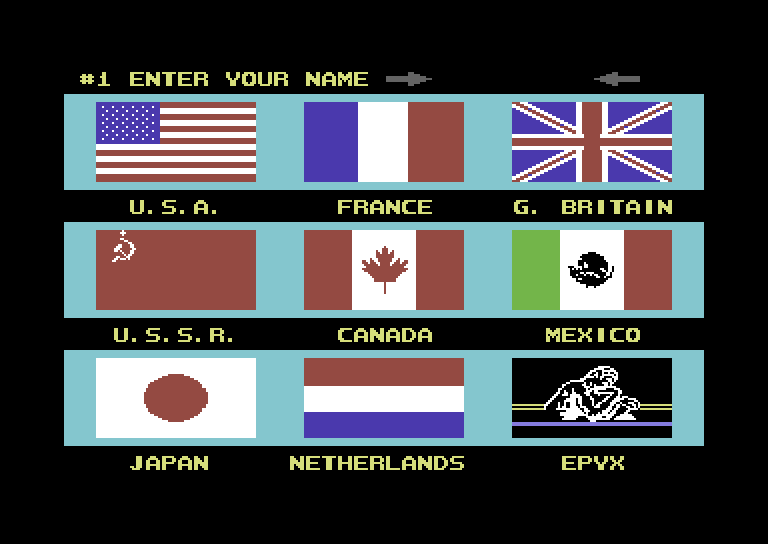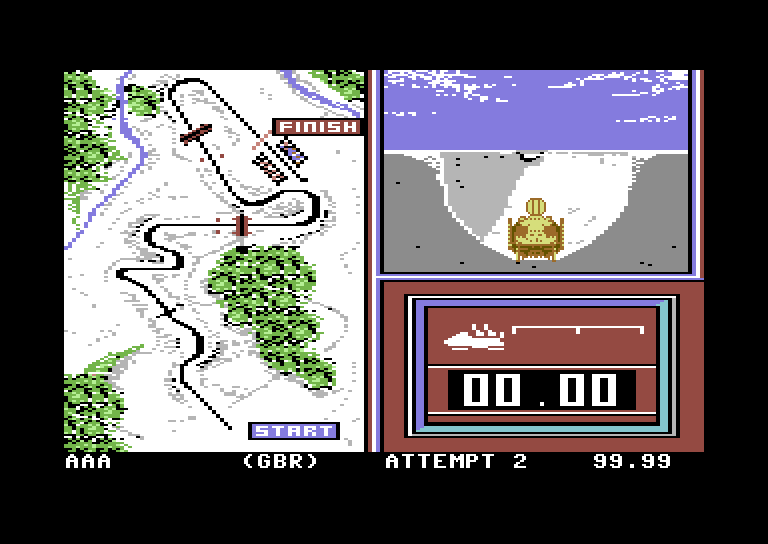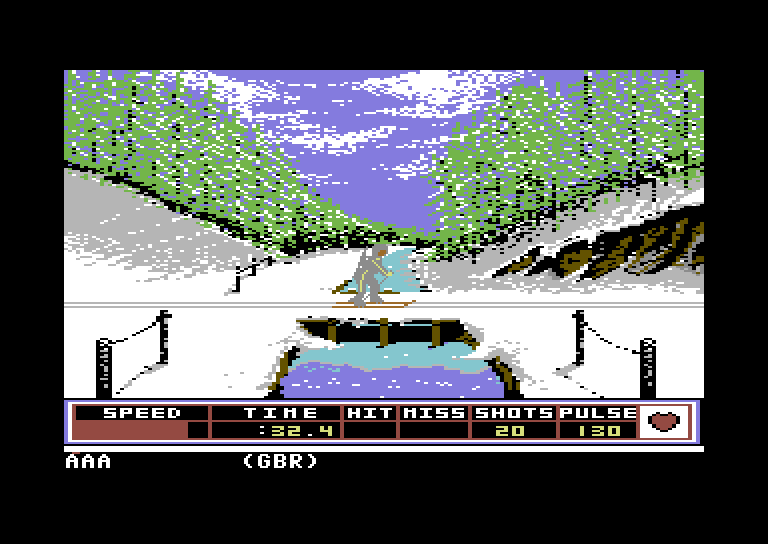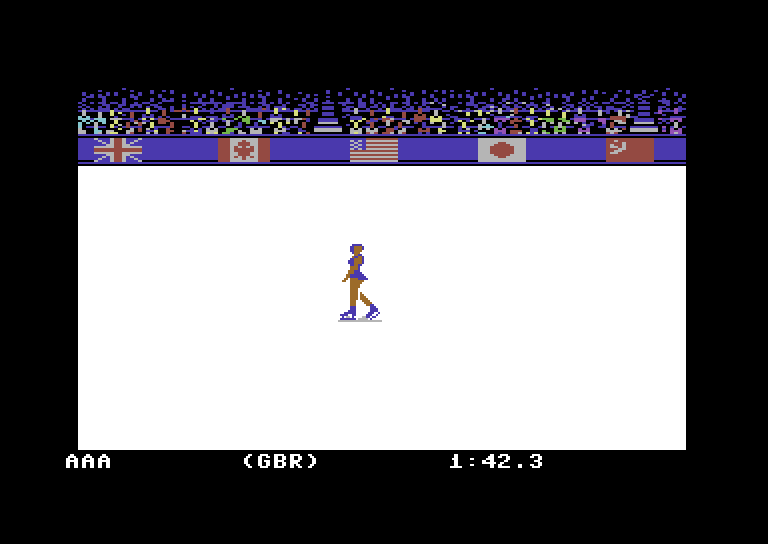
Younger readers, and indeed older readers who grew up on consoles, may not remember the age of joysticks. Actual, aeroplane-style joysticks. The ones I remember most were the ones that relied on suction cups under their base to hold them in place on the desk. They were a species whose life was a fragile one, and their natural predator was the sports game.
Somewhere along the line, someone came up with the great idea that to represent an athletic, physical contest, the best approach was to test the physical capabilities of the player. Specifically, their ability to move a joystick back and forth as fast as possible. And it was everywhere. Your decathlon game could involve the same mechanic for each of the running events, and players would be able to do the whole 100 metres at full pelt but tire before the end of the 400 metre. Realism! Anyway, for joysticks this type of thing had a tendency to result in, at best, a lurch from the desk and into the wall. Often the result was not that fortunate, and instead there was a guttural scrunch and it was all over for that joystick.
I loved those games anyway. Especially the ones tied to some bigger event. Sports narratives worked for me early in life – straining to be the very best at something was easily understandable, and especially coupled with all of the trappings, very exciting. I used my Lego to build a stadium and stage various Olympic events with Lego people dressed in rough estimation of various countries’ colours.

Winter Games has the right idea when it starts off with choosing which country to represent and getting a brief chiptune rendition of their national anthem (the Japanese one is haunting as fuck). I’ve never actually played it before, but I loved a later similar game by Epyx, who covered games for all seasons and not just the traditional two: Summer Games, Winter Games, California Games, Summer Games II…

Better still, their games took things to a different level than the joystick-destroyers. The popularity of decathlon games was presumably because one person really competes in all of those events so it was an obvious choice. But not one with that much scope for variety, since even the field segments just about all involve running too. Why be constrained? In a computer game you can be anyone or anything. You can be an abstract concept, so of course you can also be a country’s entire Winter Olympics team! Ester Ledecká may have won gold in both skiing and snowboarding, but I’m pretty sure no one has ever taken on bobsled and figure skating. In Winter Games you can, and with a range of different challenges as a result, the results from each of them adding up to an aggregate picture.
Note here that Winter Games is about a multi-sport event at which competitors from all around the world compete to win gold, silver and bronze medals, focused on Winter sports, but it’s definitely not the Winter Olympics, oh no. That would have to wait until Epyx got the licence later. But with or without that licence, or Mario and Sonic and friends, you have a format here which has continued right to the present day without changing that much – a set of sports-themed challenges which are each different, easily picked up but with enough depth to be worth playing again.

The Winter sports biathlon, a version of some people’s everyday means of getting around interrupted arbitrarily to shoot a gun for a bit, is arguably one of the more video game-y sports out there, so maybe it’s no surprise that it’s Winter Games’s strongest moment. It’s the one place where frantic joystick waggling does come in, for its uphill skiing sections, but the smarter emphasis throughout is on rhythm, and even waggling at joystick-endangering speed puts you at risk of slipping up when you get back to the flat after. The shooting sections are a marvel of miniature precision gameplay. A cursor moves quickly up and down across the target; you have to press down-up to reload between each shot and then fire. There is just about long enough to do so between the times the cursor is over a target, but it’s a difficult one. So each time you have to choose whether to take the faster shot and gain time but with an increased potential for a much larger time penalty for a miss. It’s just so elegant.
And even when the other sports are represented less elegantly, there’s something else going for them which has some different present day resonance. If you have two surviving joysticks, two players can take on speed skating (essentially the rhythmic flat skiing bits of biathlon taken on their own) against each other. But if you don’t, you can each take on a computer-controlled pacer and compare times. And all the other events have up to eight players take them on in turn. Obviously as a concept, this goes way back to… many sports themselves, and also to arcade high score tables. But Winter Games facilitates the process of competing for scores, with all the pressure and joys of being the next one in the hot seat taking on the task. It’s not something players decide to do but something front and foremost in the game.

I have great memories of playing a lot of those when I was younger. There is nothing like watching someone pull off a seemingly unbeatable score and then putting everything together to take the one chance to beat it. Even better if it takes you into the overall lead across all events. And the thing with this is that if events are less satisfying, like Winter Games’ clumsy figure skating, it almost doesn’t matter, because every player is taking on the same task. As long as there is differentiation, that will do.
Games largely stopped having high score tables, and as having more controllers became more common there was broadly a move to simultaneous multi-player. As internet connections did the same, a further move to online multiplayer followed. But then things started to come back round again. Some online games started having high score tables for each of their levels. You can take the hot seat to compete for the fastest time once more. And what are achievements and trophies but a series of different challenges, the scores from each of them adding up to an aggregate picture? It’s not just joystick life expectancy that had a happy legacy from this type of game.
[This piece originally appeared in a predecessor to Super Chart Island.]